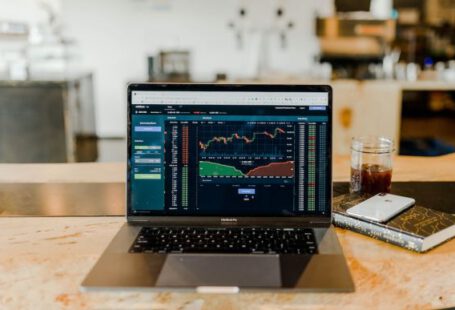Technical analysis is a popular method used by traders and investors to analyze the historical price and volume data of a security. By examining patterns and trends, technical analysis aims to predict future price movements and make informed trading decisions. In order to effectively utilize this method, traders often rely on various technical analysis tools. In this article, we will explore some of the top picks for technical analysis tools that can help traders gain an edge in the market.
Moving Averages: Spotting Trends
Moving averages are one of the most widely used technical analysis tools. They smooth out price data by calculating the average price over a certain period of time. This helps traders identify trends and determine potential entry and exit points. The two main types of moving averages are the simple moving average (SMA) and the exponential moving average (EMA). While the SMA gives equal weight to all data points, the EMA assigns more weight to recent data, making it more responsive to price changes.
Relative Strength Index (RSI): Gauging Overbought or Oversold Conditions
The Relative Strength Index (RSI) is a momentum oscillator that measures the speed and change of price movements. It oscillates between 0 and 100, with values above 70 indicating overbought conditions and values below 30 indicating oversold conditions. Traders often use the RSI to identify potential reversals in price trends. When combined with other technical analysis tools, such as trendlines or moving averages, the RSI can provide valuable insights into market conditions.
Bollinger Bands: Volatility Indicators
Bollinger Bands are a popular technical analysis tool that consists of a middle band, an upper band, and a lower band. The middle band is usually a simple moving average, while the upper and lower bands are set at a certain number of standard deviations away from the middle band. Bollinger Bands help traders visualize volatility and identify potential price breakouts. When the price moves close to the upper band, it indicates that the security is overbought, while prices near the lower band suggest oversold conditions.
Fibonacci Retracement: Predicting Price Levels
Fibonacci retracement levels are based on the mathematical sequence discovered by Leonardo Fibonacci. These levels are often used to identify potential support and resistance levels in a price chart. Traders believe that these levels act as psychological barriers, causing prices to bounce back or reverse direction. By drawing Fibonacci retracement levels on a chart, traders can anticipate potential price levels where buying or selling pressure may emerge.
Volume Analysis: Confirming Price Movements
Volume analysis is an essential tool in technical analysis that helps traders validate price movements. By examining the volume of shares traded, traders can determine the strength and conviction behind price trends. High volume during an uptrend suggests strong buying interest, while high volume during a downtrend indicates strong selling pressure. Volume analysis can also be used to identify potential reversals when there is a divergence between price and volume.
Conclusion: Empowering Traders with Technical Analysis Tools
In conclusion, technical analysis tools play a crucial role in helping traders make informed trading decisions. Moving averages, RSI, Bollinger Bands, Fibonacci retracement, and volume analysis are just a few of the many tools available to traders. Each tool provides unique insights into the market and can be used in conjunction with others to gain a comprehensive understanding of price movements. By utilizing these top picks for technical analysis tools, traders can enhance their trading strategies and increase their chances of success in the market.




